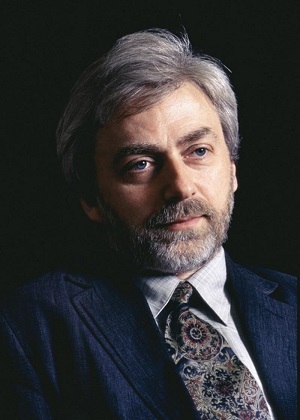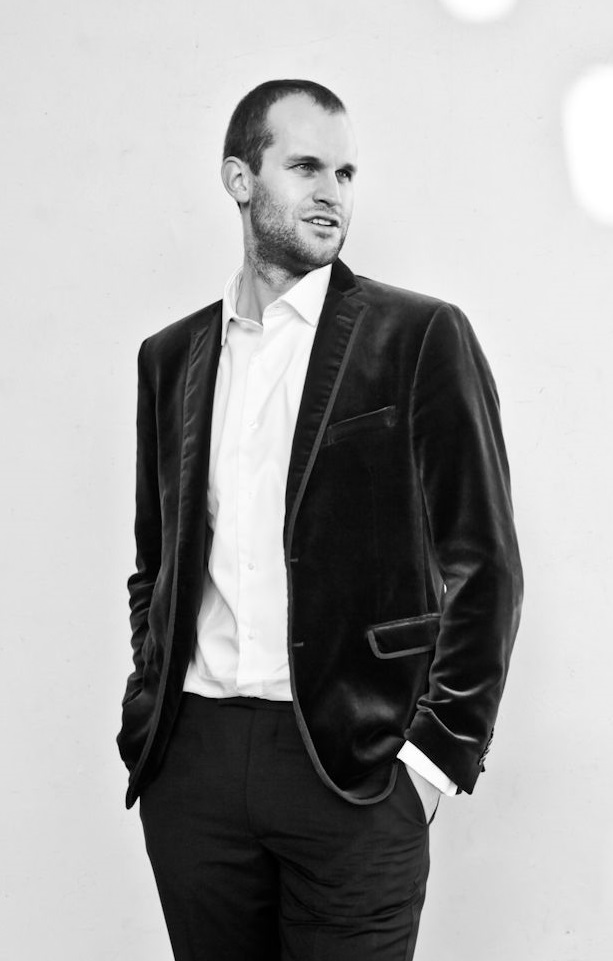Leonard Bernstein is 100 already. Actually, he’s not – his centenary falls in 2018, but the LSO, an orchestra he conducted many times, is building up to the anniversary with a series of concerts featuring his three symphonies. This performance of the Second completed the cycle, but the concert also showcased another side of Bernstein’s work with Wonderful Town, one of his early Broadway shows. It was cut down to a concert version, but was still an all-singing, all-dancing extravaganza, regularly overspilling the packed Barbican stage.
The big news in the first half was a rare appearance by the elusive Krystian Zimerman (pictured below, image Hiromichi Yamamoto), as piano soloist in the symphony. Bernstein and Zimerman make a curious combination. Bernstein’s music is all big, direct gestures, while Zimerman’s pianism is all subtlety and nuance. But it was a constructive tension: for all his pastel shades of piano tone, Zimerman is also a direct communicator, clearly delineating Bernstein’s thematic ideas and patiently narrating their evolution. There is little in this score to show off the lyrical cantabile that makes his Chopin unique, but there are many sides to Zimerman’s art. His staccato touch is round and delicate, but also has the focus of tone that Bernstein requires. And, while the solo part is not particularly virtuosic – or rather seemed effortless to Zimerman – the few florid outbursts were delivered with the grace and elegance that marks him out as one of the true greats.
 The symphony is subtitled “The Age of Anxiety”, after the Auden poem that inspired it. Bernstein structured the work closely on the poem, but it communicates Auden’s ideas in more abstract terms, about the search for meaning in the post-war world. It was partly conceived for dance, as was clear from Simon Rattle’s energetic direction from the podium. Zimerman was in poor health, and coughed continuously throughout the performance. That didn’t affect his playing, but it forced Rattle to accommodate him more, no small task given the huge orchestral textures he was also marshalling. But the London Symphony was on top form, and readily responsive to his always clear direction. Towards the end, Bernstein resorts to some crude block chord effects, revealing some minor ensemble problems from the otherwise impeccable orchestra. That’s a minor gripe though, given the quality of the music-making, and especially given the change of pace seamlessly achieved after the interval.
The symphony is subtitled “The Age of Anxiety”, after the Auden poem that inspired it. Bernstein structured the work closely on the poem, but it communicates Auden’s ideas in more abstract terms, about the search for meaning in the post-war world. It was partly conceived for dance, as was clear from Simon Rattle’s energetic direction from the podium. Zimerman was in poor health, and coughed continuously throughout the performance. That didn’t affect his playing, but it forced Rattle to accommodate him more, no small task given the huge orchestral textures he was also marshalling. But the London Symphony was on top form, and readily responsive to his always clear direction. Towards the end, Bernstein resorts to some crude block chord effects, revealing some minor ensemble problems from the otherwise impeccable orchestra. That’s a minor gripe though, given the quality of the music-making, and especially given the change of pace seamlessly achieved after the interval.
Wonderful Town was written in 1953, so just four years after the symphony, but it’s a different world. Rattle suggests in the programme that we can hear the first traces of West Side Story in the score. And so we can, but this is still fairly conventional show music, even if done with superior talent. The story tells of two sisters, Eileen (Danielle de Niese) and Ruth (Alysha Umphress), who come to New York from rural Ohio, and get into all sorts of scrapes (Eileen starts Act II in jail), before Ruth finally finds love, thus preventing their return to the sticks. Along the way, librettists Betty Comden and Adolph Green find as many situations as possible to show off Bernstein’s talents, weaving every imaginable popular idiom of the day into the music.
This “concert version” was a selection of the main numbers, plus a few instrumental interludes, but with most of the dialogue cut. That was plenty to get the gist of the story, as was the minimal stage action – entering and exiting, some interaction between the characters and some dancing, too. The LSO was reconfigured as a deluxe pit band, with the brass and a sax section as a separate unit stage right and the double basses raised behind the ensemble. The Broadway feel was enhanced by some coloured lighting and by amplification for all the soloists, most of whom didn’t need it, but it did allow for some effective vocal acting without worries about projection. The London Symphony Chorus were also involved, their vocal contributions mainly restricted to unison support in the choruses, though they were also called upon for clapping, finger snaps, and a little hand jiving.
 Umphress and de Niese were both impressive in the lead roles, and well cast, Umphress dominating the proceedings with her cabaret repartee, with de Neise (slightly) more demure and operatic. Most of the remaining cast took multiple parts, so the details of the story were quickly forgotten. The opening “Christopher Street” showcased an impressive Ashley Riches (pictured right). Duncan Rock was convincing as the washed-up footballer Wreck, and Nathan Gunn gave a commendable turn as the love interest, Bob, a thankless task though, given that his solo and later duet are among the weakest numbers.
Umphress and de Niese were both impressive in the lead roles, and well cast, Umphress dominating the proceedings with her cabaret repartee, with de Neise (slightly) more demure and operatic. Most of the remaining cast took multiple parts, so the details of the story were quickly forgotten. The opening “Christopher Street” showcased an impressive Ashley Riches (pictured right). Duncan Rock was convincing as the washed-up footballer Wreck, and Nathan Gunn gave a commendable turn as the love interest, Bob, a thankless task though, given that his solo and later duet are among the weakest numbers.
It added up to a long evening, but nobody seemed to mind. Even so, this “concert version” could do with a bit more trimming; the instrumental interludes could go, and some of the solo numbers, too. It also has an abrupt ending. But Rattle had the ideal solution, an encore of the conga number. The first time round this had members of the chorus and the entire second violin section dancing, and for the encore, much of the audience joined the line too.














Add comment